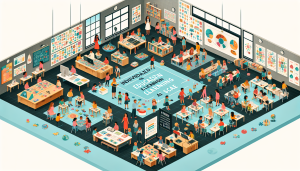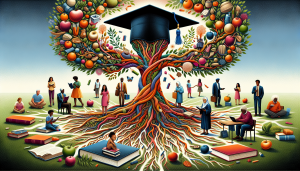The End of Standardized Testing? New Ways to Measure Student Success

The End of Standardized Testing? New Ways to Measure Student Success
Standardized testing has long been a controversial topic in the world of education. On one hand, it provides a way to measure the academic performance of students across different schools and districts. On the other hand, it has been criticized for creating a one-size-fits-all approach to education and placing unnecessary stress and pressure on students. But is the era of standardized testing coming to an end? As we delve into the complexities of our education system, new ways of measuring student success are emerging. Let’s explore the potential end of standardized testing and the rise of alternative methods for understanding how our students are progressing.
The Flaws of Standardized Testing
The concept of standardized testing is not a new one, but its use in the education system has been increasing in recent years. The purpose of these tests is to provide a standardized way to measure student achievement and compare it to a set of predefined standards. However, this approach has been heavily criticized for its flaws and limitations.
For one, standardized tests do not take into account the diverse learning styles and backgrounds of students. They are generally based on a one-size-fits-all approach, which can often fail to accurately reflect the abilities and progress of individual students. Additionally, these tests are often biased towards certain demographics, creating inequities in the education system. Furthermore, standardized tests do not measure important skills such as critical thinking, problem-solving, and creativity, which are crucial for success in the real world.
Alternative Ways to Measure Student Success
As the flaws of standardized testing become more evident, educators and policymakers are exploring alternative methods for measuring student success. These methods take a more holistic approach, looking beyond just academic performance to take into account other aspects of a student’s development.
One such alternative is performance-based assessments, which require students to demonstrate their knowledge and understanding through real-world projects and activities. This approach allows students to showcase their skills and creativity and provides a more accurate reflection of their abilities.
Another method gaining popularity is student portfolios, where students compile evidence of their learning and progress throughout the year. This allows for a more personalized and comprehensive assessment of a student’s growth and development.
Some educators are also turning to competency-based assessments, which focus on mastery of specific skills rather than meeting a certain benchmark. This approach allows for a more individualized and targeted evaluation of a student’s strengths and weaknesses.
The Future of Student Assessment
It’s clear that the traditional model of standardized testing is not the most effective or equitable way to measure student success. As alternative methods continue to gain traction, the question arises: is this the end of standardized testing?
While it may not completely disappear, it’s likely that we will see a shift towards a more diverse and inclusive approach to student assessment. As we strive to provide a more well-rounded education for our students, it is essential to consider alternative methods that not only measure academic achievement but also nurture the development of important life skills.
Conclusion
The end of standardized testing may be near, but it’s not the end of measuring student success. With the growing recognition of its flaws, educators are exploring new and improved ways to assess students. As we continue to evolve and adapt our education system, let’s embrace these alternative methods and strive towards a more comprehensive and individualized approach to measuring student success.










